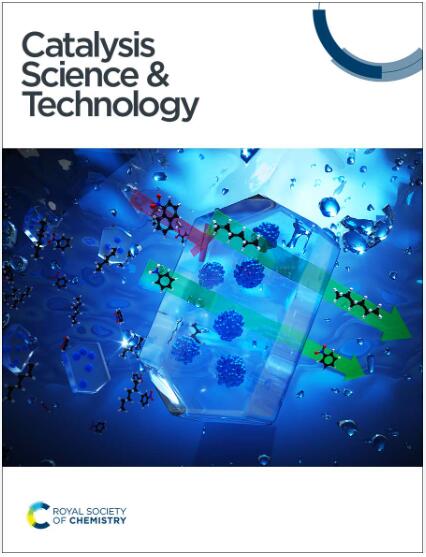Towards superior efficiency of the CO2-derived Fischer–Tropsch synthesis process over iron-based metal–organic framework-derived multifunctional catalytic materials†
IF 4.4
3区 化学
Q2 CHEMISTRY, PHYSICAL
引用次数: 0
Abstract
The strategic implementation of carbon utilization technologies is crucial for combatting climate change. The success relies on storing captured CO2 as high-volume, energy-dense synthetic fuels and chemicals. Herein, iron-based systems in the Fischer–Tropsch synthesis process have shown potential for higher efficiency. However, examples of producing fuel and aromatic-range C5+ heavy hydrocarbons are scarce. Given the enhanced significance of metal–organic framework-based materials in our decarbonization efforts, this project demonstrates the direct transformation of CO2 into C5+ liquid paraffins, olefins, and aromatics—key chemical building blocks in the petrochemical industry. This work systematically investigated the catalytic impact of critical synthetic parameters, such as pyrolysis temperature and duration. Thinner carbon layers with more defects from higher pyrolysis temperatures or extended times improve gas diffusion to internal iron species, governing catalytic performance. The additional promotion of alkali metals and the construction of bifunctional catalytic systems combined with zeolite also alter the catalytic outcome.

求助全文
约1分钟内获得全文
求助全文
来源期刊

Catalysis Science & Technology
CHEMISTRY, PHYSICAL-
CiteScore
8.70
自引率
6.00%
发文量
587
审稿时长
1.5 months
期刊介绍:
A multidisciplinary journal focusing on cutting edge research across all fundamental science and technological aspects of catalysis.
Editor-in-chief: Bert Weckhuysen
Impact factor: 5.0
Time to first decision (peer reviewed only): 31 days
 求助内容:
求助内容: 应助结果提醒方式:
应助结果提醒方式:


